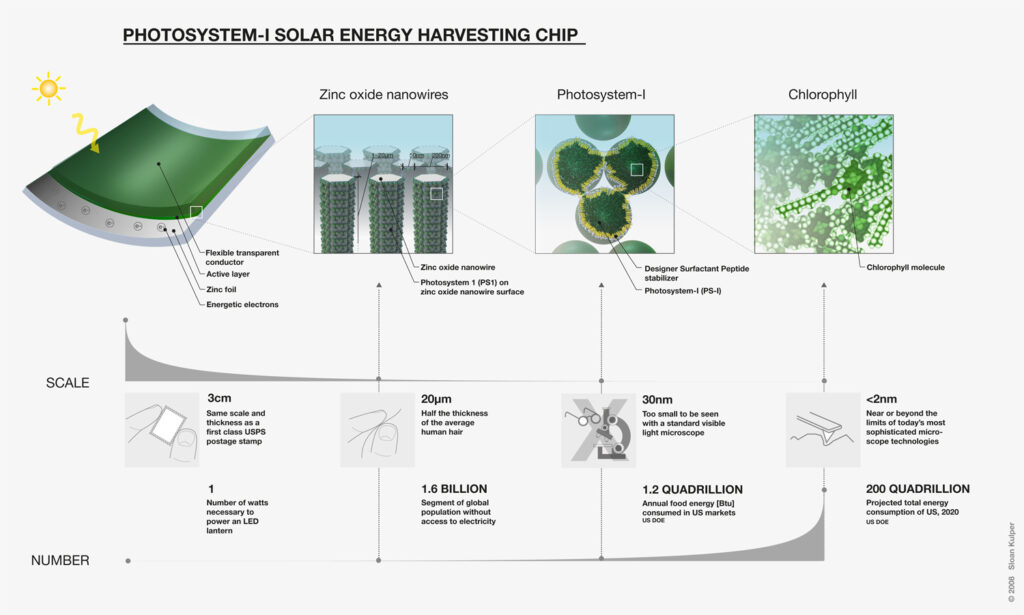
become a cheap, easy alternative to traditional solar cells.”
The Idea looks pretty much crazy, but actually it is not. An entirely novel approach to photo voltaic has been investigated and conceptualized by a joint research study conducted by MIT and EPFL. By taking the very protein in plants that allows for photosynthesis and engineering it to produce electrical current, MIT researcher Andreas Mershin has opened the door for potentially cheap and easy to reproduce solar energy. The work appears this week in the open-access journal Scientific Reports and is an extension of a project begun eight years ago by Shuguang Zhang from MIT’s Center for Biomedical Engineering and EPFL professor Michael Graetzel.
In his original work, Zhang was able to enlist a complex of molecules known as photosystem-I (PS-I), the tiny structures within plant cells that carry out photosynthesis. Zhang and colleagues derived the PS-I from plants, stabilized it chemically and formed a layer on a glass substrate that could — like a conventional photovoltaic cell — produce an electric current when exposed to light. The next step was to find ways to amplify this current.
If you remember high school biology classes, you will hopefully remember a process called photosynthesis, whereby plants turn sunlight into energy. Mershin has found a process which extracts the photosynthesizing molecules, called photosystem I, from plant matter. Photosystem I contains chlorophyll, the protein that actually converts photons into a flow of electrons.
Mershin was able to create a tiny “forest” of zinc oxide (ZnO) nanowires as well as a sponge-like titanium dioxide (TiO2) nanostructure coated with the light-collecting material derived from bacteria. The nanowires not only served as a supporting structure for the material, but also as wires to carry the flow of electrons generated by the molecules down to the supporting layer of material, from which it could be connected to a circuit. “It’s like an electric nano forest,” he says.
Mershin says the process has been simplified to the point that virtually any lab could replicate it — including college or even high school science labs — allowing researchers around the world to start exploring the process and making further improvements. The new system’s efficiency is 10,000 times greater than in the previous version — although in converting just 0.1 percent of sunlight’s energy to electricity. Ultimately, once the efficiency reaches 1 or 2 percent, he says, that will be good enough to be useful, because the ingredients are so cheap and the processing so simple.

Courtesy : ExtremeTech , EPFL
